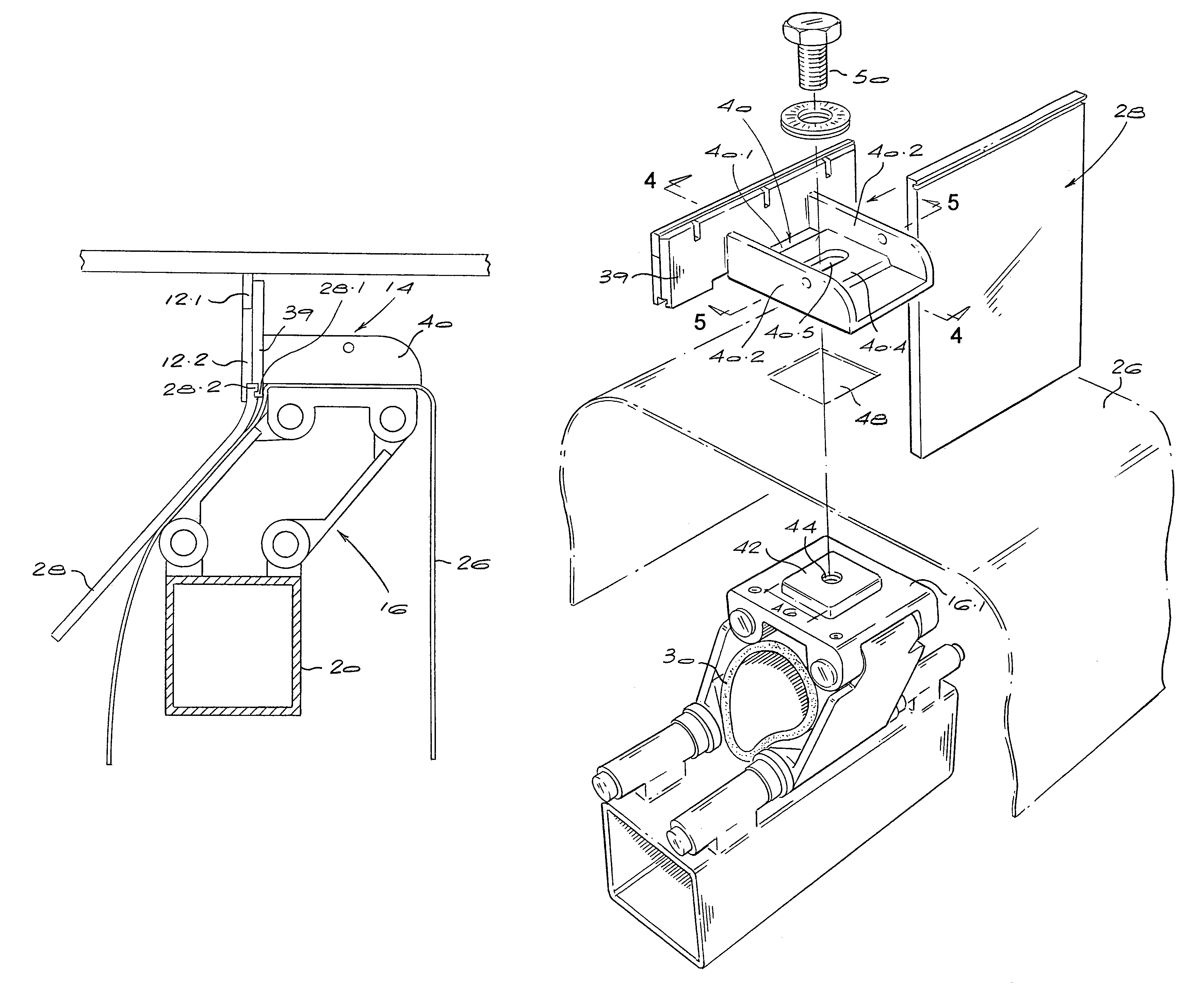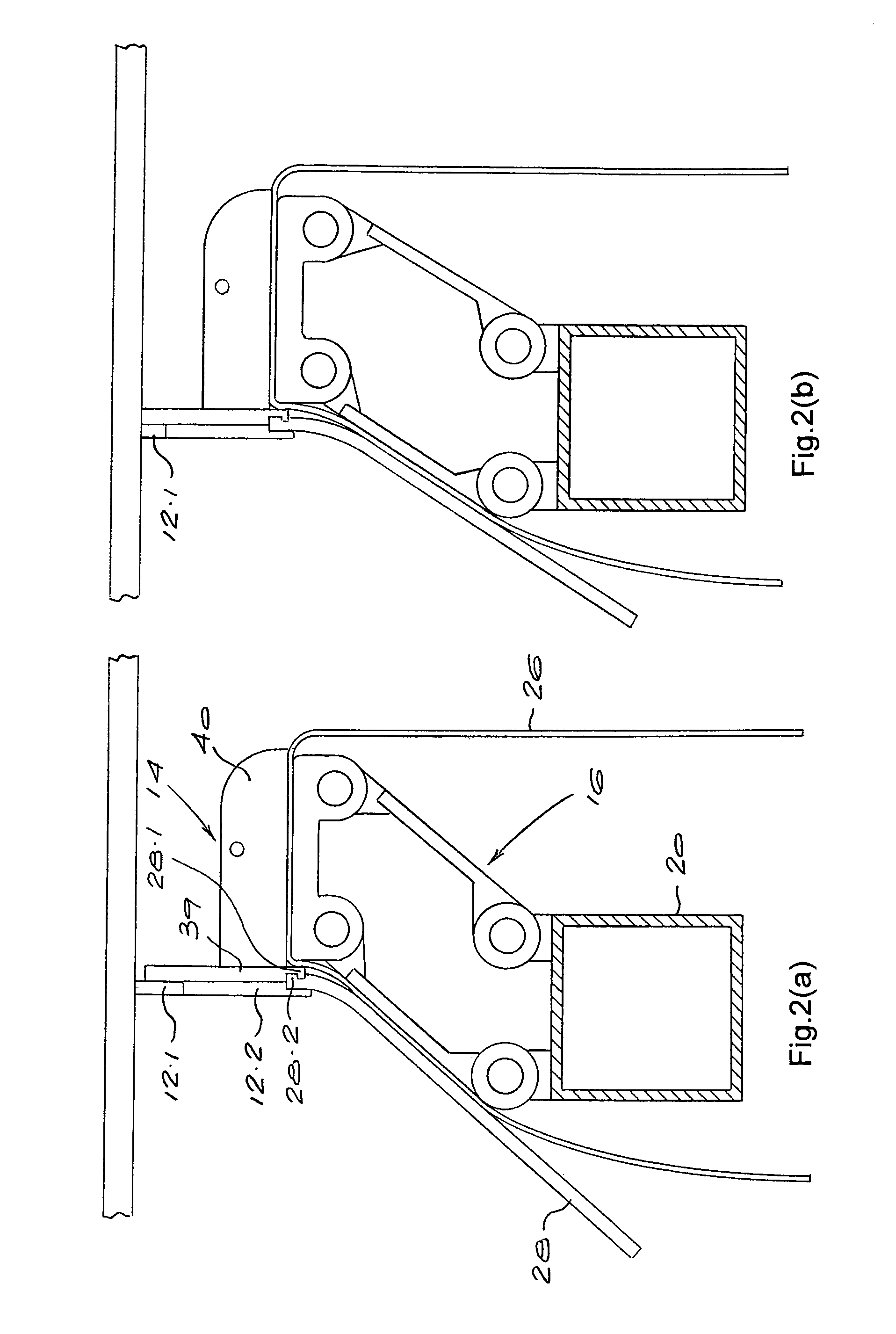Conveyor belt scraper
a scraper and conveyor belt technology, applied in the direction of conveyor parts, cleaning, transportation and packaging, etc., can solve the problems of large heat generation the frictional contact between the scraper and the belt is not easy to solve, etc., to reduce the build-up of heat in the assembly and reduce the impact
- Summary
- Abstract
- Description
- Claims
- Application Information
AI Technical Summary
Benefits of technology
Problems solved by technology
Method used
Image
Examples
Embodiment Construction
[0032]FIGS. 1(a) and 1(b) illustrate components of a conventional conveyor belt scraper of the type sold under the trade mark DIRTWHACKER®. The scraper 10 includes a blade segment 12 supported by a steel blade segment support bracket 14. The blade segment 12 consists of an insert 12.1 of tungsten carbide or other suitably hard material mounted in a rebate in a steel plate 12.2.
[0033]The scraper 10 also includes a parallelogram linkage 16 including hingedly connected steel links 16.1, 16.2 and 16.3. The bracket 14 is formed as an integral part of the upper link 16.1 and includes an upright steel plate 14.1 reinforced by gussets 14.2. The plate 12.2 is bolted to the plate 14.1 by bolts 18. The links 16.2 and 16.3 of the linkage 16 are hinged to a steel support bar 20 which forms part of the linkage and also forms part of the support structure for the scraper 10. Together with the bracket 14, the linkage 16 forms a blade segment support.
[0034]The numeral 22 indicates the bottom run of ...
PUM
 Login to View More
Login to View More Abstract
Description
Claims
Application Information
 Login to View More
Login to View More - R&D
- Intellectual Property
- Life Sciences
- Materials
- Tech Scout
- Unparalleled Data Quality
- Higher Quality Content
- 60% Fewer Hallucinations
Browse by: Latest US Patents, China's latest patents, Technical Efficacy Thesaurus, Application Domain, Technology Topic, Popular Technical Reports.
© 2025 PatSnap. All rights reserved.Legal|Privacy policy|Modern Slavery Act Transparency Statement|Sitemap|About US| Contact US: help@patsnap.com



